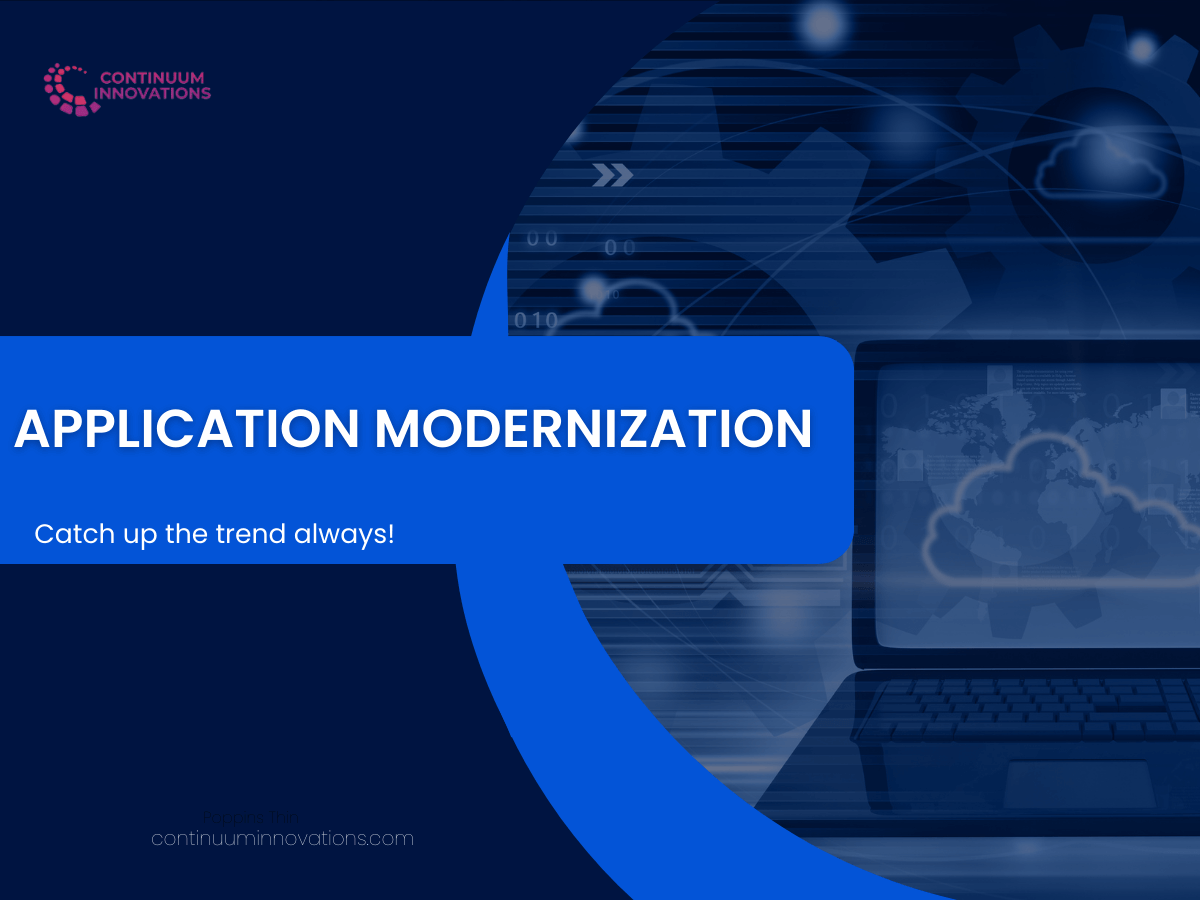Application Modernization Services
Survival of the fittest is not only meant for living things but also for technologies too. Yes! To join the race in this super competitive tech world, every application must be in its latest upgraded version. And at the same time, organizations can’t sink time, money and resources to build applications from scratch every time. Here comes Application Modernization, the ideal solution for this typical issue. Let’s know what it is.
What is Application Modernization?
Application Modernization is the technical process of updating legacy applications in all kinds of aspects like features, internal architecture and infrastructure, etc..,. It is also called legacy modernization. The prime purpose of application modernization is to improvise the technical performance of the entire organization and to accelerate time to market. In some cases, organizations use on-premises apps. In those scenarios, they need to migrate their apps to the cloud environment as the first thing.
Why Application Modernization is Important?
In general, monolithic applications are hard to update and difficult to scale because of their complicated architecture.
All the components of the application are bound together so massive efforts are required to modify the application. If any one of the components get affected, developers need to scale the entire application just to fix the issue in the single component. After all, it consumes more money, effort, resources and time.
In Application Modernization, via microservice architectural approach, the components in the app are segregated. Thus, scaling up or fixing the issue in the single element becomes easier.
You might like: AWS Glue: The Overview
Application Modernization Assessment
Application modernization assessment is an evaluation process of existing applications to identify the best approach for updating applications. It involves analyzing the current state of applications, identifying their strengths and weaknesses, and discovering the potential benefits and challenges associated with modernization. During the assessment process, various factors are taken into consideration, such as the business goals and objectives, technological requirements, it helps in developing a roadmap for application modernization.
Key Technologies
Organizations out there can use any technologies based upon their needs and requirements for application modernization
Containers: Application code is bundled together in these software packages, allowing for easy deployment across many environments.
Microservices: By enabling each fundamental function, this architectural strategy increases the agility of application development.
Automation: Using third-party services to automate routine processes can improve the deployment, management, and diagnosis of applications.
AI & ML: Businesses can gain deeper insights from their apps and data with the aid of intelligent services and solutions.
App Modernization Approaches
Rehost: Businesses transfer apps from their old environment to the new one in exactly the same condition. It is also known as lift and shift.
Replatform: Companies can make changes to code with replatforming easily.
Repackage: Productivity is a main concern in this approach. minimal code changes are required here for the cloud-first environment.
Rearchitect: Rearchitecting approach is meant for scalability. It modifies the functionality and code of the application to scale better.
Rebuild: Rebuilding is the perfect solution for recreating applications. This approach is used for apps with limited lifespan and functionality
Replace: Even after rebuilding, an app could not meet the necessary requirements at times. This strategy can save critical development resources and be quicker than rebuilding. However, replacing apps could provide difficulties, such as delays in business operations and restrictions on upcoming modernization projects.

What are the Steps for App Modernization?
In general, App modernization holds three steps
1. Planning: Planning is the initial step with application modernization. In this phrase the organization has to discover what needs to be done and their current stage. Defining goals and app modernization strategy is the most thing in this step.
2. Implementation: What’s planned needs to be implemented in this stage. Some organizations might have to learn new skills to implement the plans.
3. Operation: App Modernization is not a once in a life thing. they can maintain the application in cloud and do updates whenever needed.
Benefits Of App Modernization
Accelerated time to market: It streamlined the entire process effectively, so the application comes to the market quickly.
Agility: Can adopt latest technologies and able to do quick updates
Security: Cloud first approach promotes auto updates and high-end security practices to protect the workloads.
Scalability: Auto Scaling helps balance workloads in increase as well as decrease in demand.
Brings Innovation: The Organization need not to worry about maintaining the application so that they can invest more time and efforts towards innovation
Reliability: Its built-in features offer disaster recovery, performance monitoring and backup facilities.
Efficiency: It will highly improve efficiency in the organization.
How can we help?
In the ever-evolving world of technology, application modernization has become a necessity for businesses in this digital era. By partnering with our team, cloud managed service providers you can unlock a world of possibilities and propel your business forward.
With our application modernization services, you can enhance performance, scale with confidence, future-proof your apps, reduce costs, and fortify security.
Don’t let outdated applications limit your potential. Take the leap into the future of technology and embark on a transformative journey with us.


